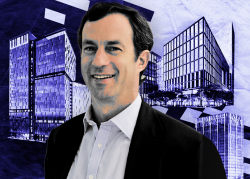The following is a preview of one of the hundreds of data sets that will be available on TRD Pro — the one-stop real estate terminal that provides all the data and market information you need.
Not even the free-flowing cash of the tech boom could save San Francisco’s office market from the pandemic pounding meted out across the country last year.
In 2021, vacancy rates rose by more than 19 percent, while asking rents slid by 1.4 percent.
The only silver lining was a significant improvement in net absorption, up more than 95 percent from 2020’s calamitous -2,500,000 square feet to a merely dreadful -112,000 last year.
As hybrid workplaces and remote working have become the new normal in the Bay Area, companies are shrinking their office footprints.
Citigroup, which last year adopted a hybrid model for all employees, announced plans to exit the six floors it occupies in its namesake tower at 1 Sansome Street for a new home half the size on the Embarcadero.
More recently, Slack put more than 200,000 square feet of its space in the Bechtel Building at 45 Fremont Street on the market for sublease.
San Francisco's pipeline of additional office space is set to be throttled in 2022 — though not due to lack of demand, but rather a lack of affordable housing.
This year, the city will only be allowed to approve about 183,000 square feet of new office projects exceeding 50,000 square feet — just 21 percent of the 875,000 square feet normally permitted. Under Proposition E, which passed by voter referendum in 2020, the square footage allowed for such “large cap” office projects must be cut by the same proportion that the city is falling short on its affordable housing goals as set by the state.
There is a way around that limit, however. A mixed use project that includes enough affordable housing for all the people who would work lower-wage jobs on the site can tap the so-called Office Jobs/Affordable Housing Balance Incentive Reserve, which would “borrow” additional office space against future large cap allocations.
Whether any San Francisco office developers would feel a need to exceed that reduced cap anytime soon remains to be seen. In neighboring Oakland, the developers behind three office projects that were approved more than two years ago have yet to even break ground.
Read more


